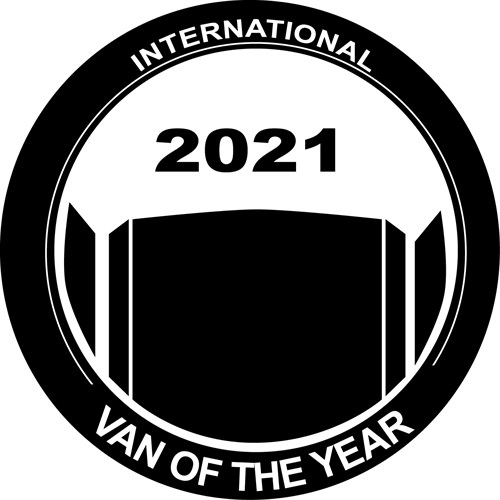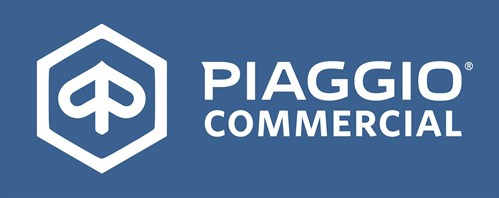Over the past 12 months, almost every manufacturer has revealed plans for electrification – and some have even carried it out.
Most notably, Citroen, Peugeot and Vauxhall have had a mid-sized van on the market for nearly a year. The brands have more recently unveiled small and large electric LCVs, which will be on sale by the end of 2021.
Meanwhile, their new Stellantis group partner Fiat has just begun taking orders for its large van, a product that has been spoken about unofficially since 2016, although its specification was officially confirmed in the summer of last year.
In such a fast-moving environment, the E-Ducato is a bit late to the party. Or is it? In a fast-changing landscape, it’s all about perspective. Fiat is either behind in its light commercial vehicle electrification strategy, or it’s preparing to be well ahead of the curve.
Life for the E-Ducato began as a collaboration. Not between different working groups within Fiat Professional or its FCA partners, but with a business – and a big business at that.
No doubt acknowledging that sales for these expensive and fairly limited-range products would likely initially only come from the very largest fleets, the E-Ducato has been ‘tailor-made’ (a phrase regularly used with abandon by the company) to suit the needs of this segment.
In contrast, it feels like many competitor products have focused on delivering a technical-only product (one that simply meets a set of minimum parameters in order to lay claim to having a working large electric van) rather than meeting the needs of an intended real-world customer.
Over the course of a year, Fiat Professional gathered monitoring data from some 4,000 combustion-engine Ducato vans to understand the different user cases on the road.
Using control units, connected in real time, Fiat was able to monitor and collect the data to determine which business missions were suitable for the switch from diesel to electric, without it causing any undue interruption to routes or routines.
A total of 50 million kilometres were travelled by the connected vehicles, helping Fiat to understand its customers and users before embarking upon a more in-depth pilot, the likes of which Fiat Professional had never undertaken before. Using this data, development vehicles were loaned strategically to drivers that fit the profile, with the mini-fleet of pre-series production vehicles closely scrutinised to help identify the ideal battery size, daily distance covered, type of route driven, and operational timings and charging routines. Ultimately, Fiat created a real-life customer profile of the E-Ducato user. That user was none other than parcel-delivery giant DHL Express.
Speaking about the partnership, Eric Laforge, head of the LCV Enlarged Europe division at Stellantis, said: “We’re proud that a player as important as DHL Express has chosen the E-Ducato as part of such an ambitious goal. With the E-Ducato, our task was not only to develop a sustainable product from both an economic and environmental perspective, but most of all to provide a complete mobility solution for our partners.”
Laforge believes that within five years as much as 25% of the market for light commercial vehicles could be battery electric in Europe, and that in 10 years this could rise to 80%. He also thinks that this will be the year electric vans really take off in the market. With a complete line-up of electric vans from PSA, the incoming Ford E-Transit and the Ducato, there will certainly be some healthy competition.
The UK’s 350,000 van sales are a glittering prize every manufacturer will be hoping to take a large share of. “[The] UK is a really important market for the E-Ducato, probably the biggest one at the beginning, potentially,” Laforge said.
The approach of the other Stellantis brands (Peugeot, Citroen and Opel/Vauxhall) is not dissimilar to the E-Ducato, with dual battery pack options of 37kWh or 70kWh compared with the E-Ducato’s 47kWh or 79kWh, and an extensive range of body sizes. However, according to Laforge, the products were created in isolation.

The different approaches will be used as a learning exercise to inform the next generation of vehicles, which will likely have more global ambitions and consider the needs of FiatChrysler Ram customers in the US, as well as other markets across the world.
“Development had started before the idea [to merge] the companies, so that’s why the different brands have different solutions,” Laforge explained. “We will take the best of the two worlds to make the next generation even better. Today they are two different technologies; what will happen in the future is that the electrified vehicle will be available worldwide so we will use the best competencies we have in the group wherever they are in the world.”
Luca Marengo, head of product marketing at Fiat Professional, agrees that greater collaboration on future products, utilising the enlarged group’s strengths and the knowledge taken from the independent development of the large electric vans, will be advantageous.
“As of today, the E-Ducato is unique technology,” Marengo said. “Other brands have a different solution for their large vans, but we definitely can create a common solution taking into consideration the strengths and experience that we have made in
the past, and we can work together as Stellantis.
“It’s a really disruptive moment, and there are big changes for electrification and the mindset of our customers, dealers and partners. We’ve already started training for our sales and aftersales teams. Sales staff now have a specific tool to help customers understand the total cost of fleet ownership, and we have a free app available called Pro Fit, which delivers a simulation to fit the client’s needs, so every customer can be more comfortable with the transition to electric.”
The Stellantis brands have also been bold in their respective attitudes to body sizes for electric vehicles. Their medium-sized vans, and now large vehicles, will all be available in a similar range to their combustion engine counterparts, a decision for Fiat that was led by its data analysis with DHL.
“The E-Ducato is available in almost all the versions offered by the diesel equivalent,” Marengo said. “We discovered [from working with DHL] that what we need is what we already have. The customer fits their requirements to the current commercial vehicle; we don’t want them to adapt their vehicle, instead the vehicle should adapt to their needs. The line-up is consistent with the diesel version and will have the same capacity for the vehicle to make conversions, payload capacities are in line with market requirements, we have the same gross vehicle weight range of 3.5t or 4.25t, and the same load capacity in terms of volume – this is another Ducato, it’s just electric.”
For the meantime, the E-Ducato is the only fully electric LCV in the Fiat Professional range, but as the small Doblo and medium Talento become aligned with the next generation of the PSA line-up, they too will be electrified. While the product itself will undoubtedly be a straightforward adaptation of the group’s shared models, the E-Ducato indicates that the process of bringing EVs to customers will be uniquely Fiat’s in its execution. Much like its history of using its own gearboxes or engines in joint-developed products, the exhaustive testing with DHL is an indication that Fiat will always look to put its own stamp on its products.
Fiat keeps right on track
For me, a trip to Balocco is always an exciting occasion. North-east of Turin, it is home to the world famous Circuito di Balocco proving ground, a 1,200 acre test track built by Alfa Romeo in the 1960s and used by Fiat-Chrysler for top-secret vehicle development.
My last trip was in mid-2019 for an off-the-record drive of an electric Ducato prototype, the very vehicle helping to inform the development of the van being launched this year. Understandably given the secrecy no pictures were allowed, and such was the process of clearing security and getting around the mammoth site that notebooks and pens became frustratingly separated from my person, meaning my reflective notes are disappointingly concise. Nonetheless, from memory my first (and as yet only) experience of the E-Ducato was an entirely impressive one.
Accompanied by a laptop-wielding engineer, I briskly lapped the track as my co-driver tapped keys and analysed data. With important dashboard and centre console areas covered to hide the EV’s new dials and buttons, my encounter was only a physical one and, although brief, my lasting impression was that this was a vehicle destined to be some way ahead of the competition. It felt more responsive than the only other big EV benchmark of the time, the Renault Master Z.E, and it was quick – really quick. While to this day I’m convinced that the power levels were beefed up to whet our appetites, it was apparent that an electric Ducato was not going to be a half-hearted effort at creating an alternative powertrain merely to tick a box. I remain optimistic that that will still be the case.
George Barrow is the UK judge for the International Van of the Year, the prestigious prize awarded by leading European LCV journalists.
Sponsored by:






